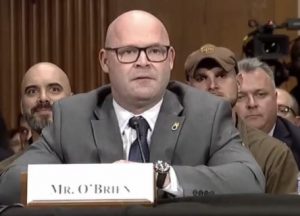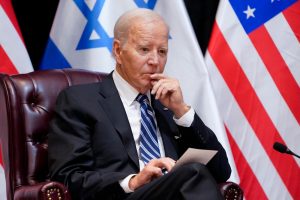What the Win for UAW Could Mean for Non-Union Automakers
On October 30, General Motors (GM) became the final member of the Big Three automakers to reach an agreement with the United Auto Workers (UAW) union, following a strike that began September 15. The automaker joined Ford and Stellantis in coming to terms with the union, setting in motion the process to ratify agreements with all three.
UAW President Shawn Fain said the new contracts represented “record” deals, implying that the negotiations resulted in a win for autoworkers. However, despite their status as the three largest domestic automobile manufacturers in the U.S., several auto giants with manufacturing presences in the country employ non-union labor.
While those labor practices may have insulated them from becoming a part of the UAW strike itself, the union’s successful negotiations with the Big Three has already had ramifications for non-union automakers, and could potentially have more in the future.
The UAW Strike Against the Big Three Ended With Large Gains for Workers
When the UAW strikes were announced, Fain insisted that they would not end until the union got what it demanded. Instead of targeting a single plant or automaker, the union included all of the Big Three in its strike plans. This led to an historic number of auto workers walking off of the job in a movement that quickly spread beyond the initial group of strikers.
Manufacturers were publicly firm in their positions leading up to and in the early days of the strike. However, mounting pressure from the growing number of strikers, polls showing popular support for the unions, and a picket-line visit and public encouragement from President Joe Biden eventually brought each of the Big Three to the negotiating table.
After six weeks of striking, Ford was the first of the group to reach a tentative agreement with the UAW on October 25. Just three days later, the UAW came to an agreement with Stellantis, too. GM then became the final member of the group to reach such an agreement with the UAW on October 30.
Following the agreements, Fain opted to tout the strength of the UAW rather than offer a conciliatory tone to the manufacturers. In a video announcing the deal with GM and an official suspension of the strike, Fain said, “We wholeheartedly believe our strike squeezed every last dime out of General Motors. They underestimated us. They underestimated you.”
While the UAW fell short of some of its goals in the negotiations, such as a 32-hour workweek, the tentative agreements it reached with automakers include major gains for workers. If ratified – which is highly likely – the agreements will hold until 2028. The deals with GM and Stellantis have yet to be made public, but details about the Ford agreement have emerged. Some of the most notable contract changes at Ford, as reported by Politico, include:
Top-line wage increases of 25% for the life of the new contracts
A cost-of-living adjustment for workers
Increased starting pay for workers, up from the current $16.67 per hour to nearly $40 per hour by 2028
Increased 401(k) returns
Expanded right to hold future strikes over plant closures
Politico also reported that the deals with GM and Stellantis will likely be very similar to the one with Ford.
Following the announcement of the tentative agreement with GM being reached, Biden spoke to reporters at the White House about the developments. The president heralded the deals as “historic” while insisting that the agreements would have long-term benefits for manufacturers as well.
“These record agreements reward auto workers who gave up much to keep the industry working and going during the financial crisis more than a decade ago,” said Biden. “These agreements ensure that the Big Three can still lead the world in quality and innovation.”
The Strike Has Already Impacted Non-Union Manufacturers
Some of the largest automakers in the world operate facilities in the U.S. that use non-union labor forces. Companies like Toyota, Hyundai, Volvo, Mercedes-Benz, BMW, and Tesla were not directly involved with the UAW strike because, unlike the Big Three, their plant workers do not belong to the union.
However, the UAW’s historic victory has already had an indirect effect on at least one of those manufacturers. On October 31, just one day after the GM announcement, reports surfaced that Toyota was increasing wages for its workers. According to a report from Labor Notes, production workers at Toyota plants received a $2.94 per hour pay increase, while skilled trade employees received a $3.70 per hour boost.
When Axios reporters reached out to Toyota spokesman Scott Vazin, he would not verify the amounts of the pay raises. However, he confirmed that the company did increase wages for workers at all U.S. plants on October 31.
Toyota also released a statement from Chris Reynolds, executive vice president of corporate resources for Toyota Motor North America, announcing the pay increases. The statement did not mention the strike, despite the transparent timing of the raises.
“We value our employees and their contributions, and we show it by offering robust compensation packages that we continually review to ensure that we remain competitive within the automotive industry,” the statement said.
UAW Leaders Plan To Expand Campaign To Other Automakers
The agreements between the UAW and the Big Three ended the historic strike that lasted 46 days. Union workers will report back to their jobs and production will resume, as manufacturers attempt to make up for stoppages. But with the newly-minted deals expiring in just four years, Fain and the UAW have indicated that they are already thinking about the next round of negotiations. Those negotiations, Fain has said, could involve other automakers outside of the Big Three.
“When we return to the bargaining table in 2028 it won’t just be with the Big Three, but with the Big Five or Big Six,” he said in October.
While he did not specify which companies would be included in the next round of negotiations, presumably they would be non-union manufacturers. Many of these companies have based their manufacturing hubs in the southeastern U.S. – a region of the country where state labor laws and public opinion are typically less hospitable to unions.
These structural differences offer a set of challenges that are distinct from the ones the UAW faced in its most recent negotiations. However, while support for unions in the South has traditionally lagged in recent decades, that may be changing. According to recent Gallup polling, public support for unions is up 64% since before the pandemic began, and at its highest level since 1965.
Despite the challenges of expanding the labor efforts to other parts of the country, Fain has insisted that workers for non-union manufacturers are part of UAW’s plan for a larger organized auto movement.
“Non-union auto workers are not the enemy. Those are our future union family,” said Fain. “We’re going to organize non-union auto workers everywhere. Together we’re going to stand up and take on corporate greed.”
Non-Union Automakers May Try To Get Ahead of Future Organizing
As of yet, no other non-union automaker has publicly announced pay increases for employees.
If the UAW deals are ratified, however, they could set a precedent for auto manufacturing pay and benefits in what has been a very public negotiation.
The also-very-public cost to the country’s largest automakers from the strike could serve as a motivating factor for non-union automakers to increase wages. Some estimates suggest that the strike cost the Big Three $4.2 billion in losses.
With the automotive supply chain still in a delicate state, work stoppages could also produce devastating losses for manufacturers and businesses downstream. Even if workers are unable to organize a strike, some may see the improved conditions as incentive to leave their current jobs and relocate – potentially causing staffing shortages for non-union manufacturers.
Other non-union manufacturers may not decide to follow Toyota’s lead and raise pay in the wake of the UAW’s successful negotiations. However, the pressure to provide better contracts for auto workers is unlikely to subside in the near future.
Fain has made it clear that he sees the UAW as an ally for non-union auto workers. With his visits to picket lines and his remarks following the announcement of the labor agreements, Biden also has positioned himself in a similar manner.
“Today’s historic agreement is yet another piece of good economic news showing something I’ve always believed,” he said in his White House address to reporters. “Worker power is critical to building an economy from the middle out and the bottom up, and so is economic growth.”
But the most pressure for automakers may come from the public itself. In addition to the American public’s general increase in support for unions, polls showed that 58% of people supported the UAW over the auto manufacturers. Union victories at companies such as UPS and Starbucks have also made headlines and invigorated the narrative around organized labor.
Fain and the UAW will face substantial structural challenges if they wish to extend the gains of the last strike to non-union workers. However, they have powerful allies and mounting public pressure to draw from. So-called “right-to-work laws” have made it more difficult for workers in the South to organize – but not impossible.
Original article: What the Win for UAW Could Mean for Non-Union Automakers


